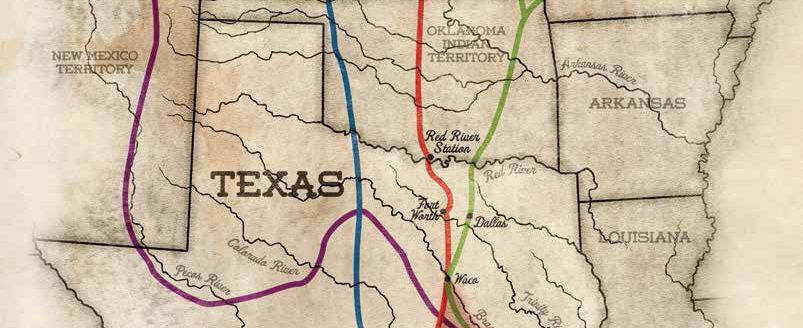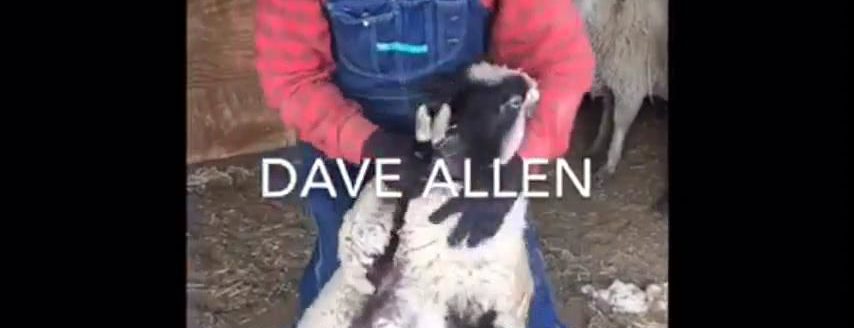So you want to build a slaughter plant?
In light of the recent increase in retail beef prices and decrease in cattle prices, many cattle producers have expressed interest in starting up small beef processing facilities that do not undercut the rancher and provide consistent prices for consumers. Davey Griffin, Texas A&M professor and Extension meat scientist, said he has been amazed at the number of producers looking into this option.
“It is just astronomical the number of inquiries we’re getting about starting a plant, getting these cattle through the system and just serving customers as well,” he said.
However, starting a meat processing facility is not without hoops to jump through, including multiple layers of government oversight and health regulations.
“One of the things that makes the U.S. system the safest system in the world in terms of food safety is our inspection service that started back in 1906 with the Federal Meat Inspection Act,” Griffin said. “The 1967 Wholesome Meat Act amended the 1906 act and included state inspections.”
Griffin said plants can fall under four inspection regulations. For a federally inspected plant, the facility must have functioning Sanitation Standard Operating Procedures to make sure the plant is clean and able to produce healthy and safe products before an animal ever enters the facility. He said it also must have a functioning Hazard Analysis and Critical Control Point plan. Federally inspected plants inspect livestock antemortem, during slaughter and postmortem.
State inspected plants operate under a cooperative agreement with U.S. Department of Agriculture Food Safety and Inspection Service. States’ program must enforce requirements “at least equal to” those imposed under the Federal Meat and Poultry Products Inspection Acts and the Humane Methods of Slaughter Act of 1978. Griffin described state-inspected plants as at more of a localized level than federally inspected plants. Additionally, products produced under state inspection are limited to intrastate commerce, unless a state opts into an additional cooperative program, like the Cooperative Interstate Shipment Program.
Griffin pointed out that not every state has a state inspection program. A little more than half do, some of those states include: Iowa, Kansas, Missouri, Montana, South Dakota, North Dakota, Texas and Oklahoma. Some plants process meat and poultry and some just process meat. In the event your state does not have a state program, the plant has to be federally inspected.
Another type of plant is called custom exempt. Griffin said a custom exempt operator slaughters livestock belonging to someone else and processes the carcasses and parts for exclusive use of the owner, members of the owner’s household, non-paying guests and household employees. It cannot be sold or donated to a charity or a food bank. Griffin said custom exempt operators often process game meat, so they are usually busy during hunting season.
“It’s a way that you can be in the business and harvest animals for someone else,” Griffin explained.
Two major guidelines for custom exempt harvesting include: no livestock may be slaughtered that result in food unfit for human consumption and products must be marked “not for sale”. Griffin said there can be more than one owner of a live animal and, in fact, many producers sell quarters or halves to customers, however the plant must have names of those individuals prior to harvest. USDA or the state inspection program still has authority over these types of plants and they make sure the plant is clean and sanitary as well as audit records. However, for custom exempt, inspectors are not always present during every phase of harvesting.
Finally, there is retail exempt, which really has more to do with stores than it does slaughtering of animals.
“Meat inspection regulations provide a retail store exemption for businesses that further prepare meat and meat food products for sale to consumers,” Griffin said.
These stores may include brick and mortar or online commerce, but must have sales to consumers through the location. These customers must include household consumers and other than household consumers such as hotels, restaurant and similar institutions. Sales to other than household consumers cannot exceed 25% of the total consumer sales or currently be greater than $75,700 annually. Only federally or state inspected materials can be sold to consumers if destined for interstate commerce/state inspected for intrastate, and accurate records must be maintained.
Show me the money!
After hearing the types of plants to choose from, the next natural question is how much money will it take to open one of these plants?
“Just as heads up, you need a lot of money to start a small plant,” said Rob Maddock, North Dakota State University animal science professor.
Although he warned of the high costs associated with processing plants, Maddock also acknowledges the need for them.
“We lost a lot of our small processing or locker plants and it’s really something I think we need,” Maddock said. “It helps move some of the beef along. When you get down to it, the small plants don’t move that much beef, but it’s a good option for a lot of producers.”
Sign up for HPJ Insights
Our weekly newsletter delivers the latest news straight to your inbox including breaking news, our exclusive columns and much more.
Maddock said when people think of small plants, they are expecting to process around 20 beef, 40 pigs and 60 lambs a week. He said a medium-sized operation can process 100 to 1,000 beef per week. Then we get into the big plants that handle anywhere from 1,000 to 5,000 beef a day.
“Depending on what you want to accomplish, your feasibility and business plan is going to be very different,” Maddock said. “It’s a good idea to do a lot of thinking about what you want to accomplish and maybe even hire some people to consult on getting into this business.”
Maddock said on average, it will cost about $400 per square foot for greenfield construction. That price includes permits, site prep, utilities, property, building, refrigeration and other costs for a small 20 head per week plant. Building includes kill floor, coolers, freezers, processing area, office space, inspector office, break rooms, retail sale area, dock and pens. However, estimates will depend a lot on where the plant is built. Depending on the needs of the plant, it would need to be between 3,000 to 4,000 square feet. According to Maddock, the cost to build a 3,000 square foot plant at $400 a square foot, would cost $1.2 million.
To repurpose an existing commercial building, Maddock estimates it will cost $150 per square foot. However, it could be up to $450 per square foot in higher cost areas. Maddock recommends using a contractor that has built food facilities before as there are specific requirements plants must meet to be inspected.
The next cost is for equipment for slaughter and processing, which includes rails, hand tools, cookers, smokers and grinders. Maddock estimates this equipment to cost $300,000 to $400,000 for a small plant. He said sometimes used equipment is available, but it is higher maintenance in the long run. Cost of labor is another aspect that cannot be neglected when it comes to cost and experience of employees.
“As far as labor, when you get started you are going to want someone who knows what they are doing,” Maddock said.
Maddock estimates a small plant will need one plant manager with experience in processing and business, hourly clerical personnel that could be outsourced, two to three production employees initially, but if the plant is successful it could require seven to eight people—especially for value-added processing.
An additional cost is pre-occupational capital expenses, which includes design of the facility, blueprints, consulting, utility prepayments, soil tests and environment impact. This will equal about 20% of the overall plant, property and equipment, or PPE fees, so for a small plant it would require $300,000 in pre-occupational capital.
Any meat left on the bone?
After considering capital investment and related expenses, the next reasonable question is if starting a small plant can actually make any money. Maddock broke it down as to what it could cost to process an animal and how much to sell it for. He said the all-in cost for slaughtering and processing a beef will be around $500 per head, $150 per pig, $120 per lamb. Maddock noted this price is two to three times what it costs Tyson to slaughter each species. This cost is without taxes, interest, depreciation or profit. Maddock recommended adding 35% to the cost to provide for potential profit and account for taxes, interest, and depreciation. After adding in the taxes, interest, depreciation or profit, it would cost $675 per head of beef to maintain a viable business model.
“For a 1,300-pound steer at $1.12 per pound, that steer is going to cost $1,456,” Maddock explained. “Then throw in $675 for slaughter costs, total cost per animal will be about $2,131, assuming no credit for the drop of hides, offal, bone or fat, unless you can find some special marketing such as smoking meats or making pet treats.”
A 1,300-pound steer, after a 62% dress, will have a hot carcass weight of about 806 pounds. That 806-pound carcass will have about a 60% cut yield, so you will end up with about 484 pounds of meat to sell off that steer. Maddock said $2,131 to slaughter the animal with 484 pounds in meat, would mean you need to charge $4.40 pound for all cuts of meat on average. He said not to use current beef prices since they are so unrealistic for projections; he recommended using historic beef prices.
At this point, future processing plant owners need to consider which business model to use. With custom plants, livestock producers are responsible for the selling animal and or product. The meat business does not pay for livestock, only charges for slaughter and processing and potentially storage. Inspected plants that are privately held buy the cattle and sell the meat. The Packers and Stockyard Act requires that all livestock must be paid for within 24 to 48 hours of delivery. He also explained the model of a co-op or member-owned plant. It is more flexibile in paying for livestock with shared profits and risks.
Another option Maddock highlighted is to hire an existing processor to do the slaughter and processing, but sell the meat yourself as a retail item. It would be considered retail exempt, so operators would need a business license, tax id number and mostly likely a local health department permit. Maddock said margins tend to be pretty tight and chain space can be an issue.
“You don’t make a heck of a lot of money doing this, unless you’re in a heavily populated area and people are willing to pay a lot of money for meat,” Maddock said. “Generally if you make an extra 200 bucks a head, that’s what people are looking for. So it’s really about marketing.”
So there you have it, the basic set-up for a small beef processing plant and estimates for needed capital.
“If you’re still interested, do a feasibility study so you know what you’re getting into,” Maddock said. “The good ones should include livestock availability, market potential, capital needs, equipment, labor, building drawings, potential business models, cash flow projections and eventual return on investments. If it’s feasible, you can pull together a business plan and hire an expert to help you with this. People who do this for a living have a pretty go idea of what to expect and if you walk in blind, you’re going to miss a lot of things.”
Lacey Newlin can be reached at 580-748-1892 or [email protected].


